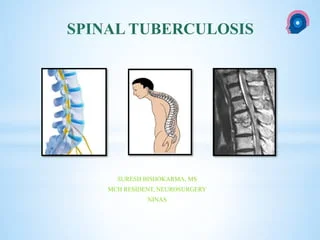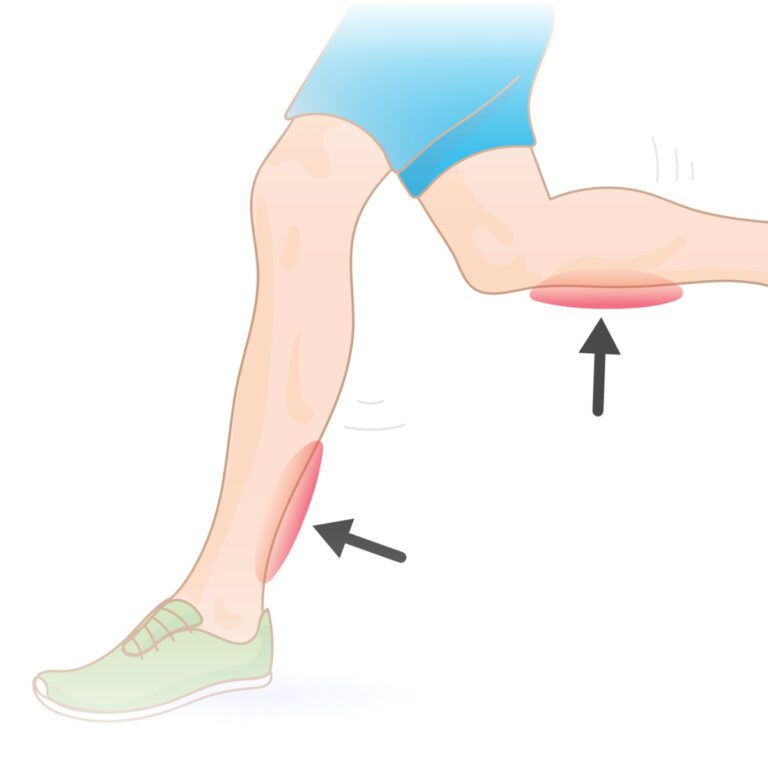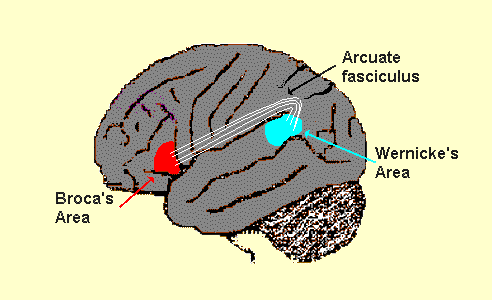Monoplegia
Table of Contents
What is Monoplegia?
Monoplegia is one type of paralysis which is mainly affected any one limb, mostly it affects the arm. The most common symptoms seen in monoplegic patients such as unable to move limbs, numbness, muscle weakness, and pain in the affected limb.
Monoplegia is different from hemiplegia in hemiplegia There is paralysis of one half of the body, While monoplegia is localized to a single limb or to a specific region of the body.
When monoplegia of the upper limb, it is also called brachial monoplegia, and when it affects the lower limb it is also referred to as crural monoplegia.
Monoplegia mostly affects the upper limb as compared to the lower limb. Monoparesis is a less severe condition as compared to monoplegia where partial paralysis of a single limb.
Occasionally, the paralysis is even further limited, to just a single muscle. though this can substantially impede function, most people with monoplegia are able to care for themselves, perform daily tasks, and find ways to work around their symptoms. in people with cerebral palsy, monoplegia is considered a sign of a good prognosis since it is one of the most minor symptoms of the disease.
Most people with monoplegia experience a moderate deterioration in functioning rising with weakness or limpness in the affected limb. over time the effects intensify, leading to full or/and partial paralysis of the affected limb.
What are the signs and symptoms of Monoplegia?
There are a number of symptoms connected with monoplegia. wind of the hands or stiffness of the feet, paralysis, numbness, spasticity, weakness, headaches, pain in the affected limb, and shoulder pain are all thought to be symptoms of monoplegia. patients of monoplegia normally feel symptoms of weakness and loss of sensation in the affected extremity, normally an arm. the extremity with paralysis continues to maintain a strong pulse.
While chronic progressive brachial monoplegia is uncommon syringomyelia and tumors of the cervical cord or brachial plexus may be the cause. the onset of brachial plexus paralysis is normally explosive where the pain is the initial feature. pain concentrates on the shoulder but may be more spread, or could be limited to the lower arm. pain is severe and often described as sharp, stabbing, throbbing, or aching.
Pain duration varies from a short period of time to many hours or weeks depending on severity. As pain relieves, weakness of one side of the leg mostly shows a tumor of the spinal cord of the lumbar plexus.
Continuous fever followed by pain in one or both legs is a symptom of lumbar plexus paralysis. Suddenly starts the pain in the course of the sciatic nerve or the femoral nerve. Muscle weakness is also associated with pain and is seen for a longer duration. All the above symptoms on one leg or arm are a type of monoplegic spinal muscular atrophy. It is gradually increasing other symptoms like tingling numbness and sensory loss.
The major signs and symptoms of monoplegia:
- Difficulty in moving the limb
- Numbness
- Stiffness of feet
- Curling of hands or toes
- Loss of muscle control
- Weakness or limpness
- Headache
- Generalized pain/ shoulder pain
- Electrical sensation/ pins and needles
- Decreased sensation over the affected limb
- Muscle stiffness or spasms.
What are the causes of Monoplegia?
It got to be noted that paralysis, in any form, comes about due to the inability of the brain to receive send or/and interpret nerve impulses or signals. the cause differs in different age groups and also on the onset progression and duration of the disease.
The major causes of monoplegia comprise the following:
Cerebral palsy:
This is a congenital disorder of muscle tone, posture, and movement.
Stroke:
This is a life-threatening condition characterized by the rapid death of neuronal cells in the brain due to the cut-off of the oxygen supply, caused by blockage or rupture of an artery.
Brachial plexopathy:
This is a type of peripheral neuropathy that brings about damage to the brachial plexus, which is located on either/or side of the neck where the nerves branch and launch into the arms on each side.s
Brain tumor/hematoma:
These conditions can cause nerve compression.
Nerve trauma/inflammation:
Any type of nerve trauma can cause inflammation of the nerves.
Nerve impingement:
Also known as a sapped nerve this comes about due to compression of the nerve by surrounding structures.
Multiple sclerosis:
An autoimmune disease in which the immune system attacks and destroys the protective covering of the nerves.
Brown-secured syndrome:
Unusual neurological syndrome, which comes about due to spinal cord lesions resulting in paralysis.
Mononeuritis multiplex:
Also called mononeuropathy multiplex or multifocal neuropathy, it is a type of peripheral neuropathy, which occurs due to damage to two or more nerve areas.
Motor neuron disease (MND):
MND Uncommon condition in which the nerve of the brain and spinal cord especially the motor neurons degenerate frequently causing paralysis.
Lumbar radiculopathy:
Also called sciatica it is a condition in which pain originating in the lumbar region radiates down the sciatic nerve affecting one or both legs.
Aneurysm:
A condition in which a portion of an artery becomes weakened bulges out and flat ruptures.
Monoplegia vs Hemiplegia
Monoplegia and hemiplegia are both types of paralysis. but how do they vary from each other?
Monoplegia is paralysis that affects a single limb of the upper or lower part of the body. so, for instance, if you had monoplegia and could not move your right arm, you would still be able to move your right leg. hemiplegia is paralysis that affects one side of the body. either/or the right side or the left side of the body can be affected.
If you had hemiplegia on your right side you would not be able to move your right arm and right leg. the muscles on the right side of your face might further be affected. spell the two conditions are dissimilar hemiplegia and monoplegia share many of the same potential causes. this can include things like injury, stroke, and cerebral palsy.
| No. | Monoplegia | Hemiplegia |
| Paralysis | Affected mostly by single – Upper limb or Lower limb | paralysis that affects one side of the body. either/or the right side or the left side of the body can be affected |
What is the mechanism of Monoplegia?
In monoplegia, the spine and the proximal portion of nerves are generally the unusual sites of limb weakness. monoplegia develops from upper extremities impairments supporter a stroke comes about due to direct destruction to the sensorimotor cortical areas, primary somatosensory cortex, primary motor cortex, secondary sensorimotor cortex, subcortical structures, and the corticospinal tract.
It is repeatedly found that impairments backing stroke are either/or caused by damage to the matching or adjacents’ neurological structures. a union of these impairments is more to contemplate than just one in isolation. damage to the corticospinal system results in an inability to activate muscles with sufficient force or in a coordinated manner which can lead to paresis, loss of fractional movement, and abnormal muscle tone. damage to the somatosensory cortical areas causes loss of somatosensation which results in an impaired capacity to monitor movement.
Considering monoplegia as it relates to cerebral palsy in premature infants the most frequent cause of cerebral palsy is periventricular hemorrhagic infarction. in period infants, the underlying causes are repeatedly cerebral infarction, cerebral malformations, and intracerebral hemorrhage. delayed crawling or walking is the typical concern that arises in infants with paralysis of the limb. in these cases, abnormalities of the legs are the main focus of attention.
How to diagnose Monoplegia?
Monoplegia is diagnosed by a physician after a physical examination and occasionally after further neurologic examination as well.
As monoplegia is fairly infrequent after a physical examination of a patient complaining of monoplegia sometimes weakness of an additional limb is also recognized and the patient is diagnosed with hemiplegia or paraplegia instead.
After a neurologic examination of the limb, a diagnosis of a monoplegic limb can be given if the patient comes in for a medical research council power grade of 0 which is a measurement of the patient’s limb strength. needly electromyography is again and again used to study all limbs, essentially showing the extent of each limb’s involvement.
Moreover, magnetic resonance imaging is the diagnostic modality of choice for investigating all forms of hemiplegia. it is especially informative to show migrational fault in hemiplegic cerebral palsy related to seizures.
An approach shouts single-pulse transcranial magnetic stimulation has also been used to help diagnose motor deficits such as monoplegia. this is done by evaluating the functional level of the corticospinal tract through stimulation of the corticospinal lesions in order to obtain neurophysiologic evidence on the honesty of the corticospinal tracts. single-pulse transcranial magnetic stimulation produces neuropsychological interpretations such as motor-evoked potentials and central motor conduction time. this response can then be differentiated from the normal limits of patients who do not show evidence of deficits in the corticospinal tracts.
What is the Treatment of Monoplegia?
Treatment of Monoplegia mostly depends upon the Diagnosis, cause, and symptoms, If Monoplegia is due to cerebral palsy, treatment is Physical therapy and medication according to the cause of Cerebral palsy while Monoplegia due to nerve injury treatment may require surgical intervention with Physical therapy and medication. so treatment may vary depending upon the diagnosis and cause and also symptomatic.
Physiotherapy Treatment
Mostly monoplegia easily recovers with the help of Physiotherapy treatment and exercise, However prognosis of monoplegia vary also depends on the diagnosis of temporary, partial, or complete paralysis. Mostly monoplegia affects the upper limb so treatment is according to the condition.
It has been found that intense activity-based and goal-directed therapy similar to constraint-induced movement therapy and bimanual therapy are more powerful than standard care. studies propose that less the affected hand could give a template for upgrading the motor performance of the more affected hand, and provides a strong rationale for the evolution of bimanual training approaches. in addition to that, there is strong evidence to keep up that occupational therapy home programs that are goal-directed could be used to supplement hands-on direct therapy.
Constraint-induced movement therapy is particularly targeted at upper limb monoplegia as a stroke. in constraint-induced movement therapy, the unaffected arm is restrained, forcing the use and frequent practice of the affected arm. this makes conversation to therapy carried out during ordinary and daily activities by the affected person.
It has been beginning that constraint-induced movement therapy is more successful at specifically improving arm movement than a physiotherapy approach or no treatment at all. this type of therapy has been demonstrated to provide only moderate improvement in patients with monoplegia. more investigation needs to be conducted in order to establish the lasting benefit of constraint-induced movement therapy. brain computer interface systems have been suggested as a tool for the rehabilitation of monoplegia, especially in the upper limb after a stroke.
Brain-computer interface systems provide a sensory response in the brain via functional electrical stimulation, virtual reality environments, or robotic systems, which permit the use of brain signals. this is extremely crucial by reason of the networking in the brain is often compromised after a stroke leading to impaired movement or paralysis.
Brain-computer interface systems permit for detection of intent to move through the primary motor cortex and then provide matched sensory stimulation according to the response that is provided. this leads to activity-dependent plasticity within the user, in need them to pay aware attention to tasks that are necessary for the activation or deactivation of specific brain areas. brain computer interface systems utilize dissimilar sources of information for feedback together with electroencephalography, magnetoencephalography, functional magnetic resonance imaging, near-infrared spectroscopy, or electrocorticography. in the middle of all of these, the electroencephalography signals are the in-mass use for this type of rehabilitation because they are the most accurate and stable.
Once more confirmation of treatment for monoplegia is functional electrical stimulation. it is the quarry at patients who obtains monoplegia through eventuality such as a spinal cord injury, stroke, multiple sclerosis, or/and stimulation in order to cause the carry-on motor units in the paralyzed muscles to contract. as in traditional muscular training, functional electrical stimulation improves the force with which the uninfluenced muscles contract, for less severely affected patients functional electrical stimulation authorize for considerable improvement in range of motion to traditional physical therapy.
A doctor may advise muscle relaxant medications to not only give comfort from the pain but as well relax the muscles which get stiff.
Physiotherapy is a treatment through physiotherapy by a teaching professional know by the name of a physiotherapist. a physiotherapist makes use of exercise therapy to raise the condition of the affected limb. a treatment plan for monoplegia from physiotherapy first incorporates passive mobilization of the limb. in the second stage of range of motion, exercises need to be done by the patient.
These two stages of the exercise continue up for improvement is noticed in the condition of the patient. after improvement is observed in the patient the patient goes through active exercise and active resistive exercises to recover complete movement of the affected limb. the recovery pattern is a slow process but the results of the treatment are very good.
Occupational Therapy
Constraint-induced movement therapy is a treatment technique where a therapist tries to better the motor and functional ability of the arm. in this treatment the therapist under controls the use of an unaffected limb and forces the patient to form use of the affected limb. the moderation of the affected arm is attained through a splint, a plaster cast, or a sling. in time the treatment with this therapy, the patient can make use of the unaffected arm only for bathing, toileting, and hygiene. for the relaxation of the activities, the patient is in needs to try to make use of the affected limb.
Functional electrical stimulation in this treatment technique for monoplegia small electrical charges are specified to muscles of the affected limb. the electrical charges assist in reinstating the functionality of the muscles. on the side from giving electrical impulse a patient go through a rigorous exercise routine for a particular period of time. over the years researchers have indicated that patients who have nil movement in their limbs regain substantial functionality after the treatment.
Treatment and side effects just about always work in a mixture. whenever a patient needs treatment for some disorder there are chances that the patient might also experience the side effects of that treatment. the probability of the event of side effects varies from person to person. there is no require to panic if a patient experiences any minor period of time. however, if a patient experiences any serious side effects then emergency medical attention is needed.
The side effects experienced by a patient going through physiotherapy treatment involve pain in the area where the exercise is being conducted a patient might protest muscle soreness and a patient may experience fatigue. bruising is also one of the side effects of going through treatment with physiotherapy. for a patient who goes through treatment with functional electrical stimulation the side effects experienced is a burning sensation on the skin a patient might also feel a tingling sensation on their skin.
Assistive devices:
these devices can make day-to-day activities easier. a few examples include walkers, wheelchairs, specialized grips and handles, and voice-activated devices.
Surgery:
If monoplegia is due to a nerve compression or tumor, surgery may be needed.
Constraint-induced movement therapy generally does not exhibit any side effects but is unfit to make use of the affected limb for their activities may lead to a bout of unhappiness in the patient. post-treatment guidelines:
The post-treatment guidelines play a very vital role in the recuperation of a patient. a patient who religiously follows the post-treatment guidelines in most cases prevents the recurrence of that disease in the future. post-treatment guidelines are a set of activities that are recounted by the doctor to help the staying healthy after the treatment is completed. some post-treatment guidelines to become after the patient after obtaining treatment for monoplegia are:
Some modifications should be made to the diet of the patient such as foods rich in fatty acids should be added to the diet for reducing the inflammation of the muscles.
Vitamin B12 should be taken by a patient either/or through some medication or/and through foods cash-rich in vitamin B12 as it helps in the development of the functioning of the nervous system. the exercise’s authority should not be stopped abruptly. Still, preferably it is chosen that a patient continues to exercise even after the treatment is complete.
Summary:
Monoplegia is a type of paralysis that affects one limb, eg. an arm or leg on the left or right side of your body. It occurs when injury to a part of the central nervous system breaks nerve signaling to the muscles in the involved limb.
It can affect the upper limb or lower limb, mostly the left or right arm or one leg. Monoplegia Symptoms can be seen suddenly or progress gradually over time.
It is mostly caused by cerebral palsy, stroke, or injury to a nerve. But it can also be the result of damage or trauma to the brain, spinal cord, and nerves on the affected limb.
However Monoplegia can mostly recover over time with proper medical and Physiotherapy treatment, it may be permanent in a few patients. Treatment options mostly focus on improving symptoms and making life better.






